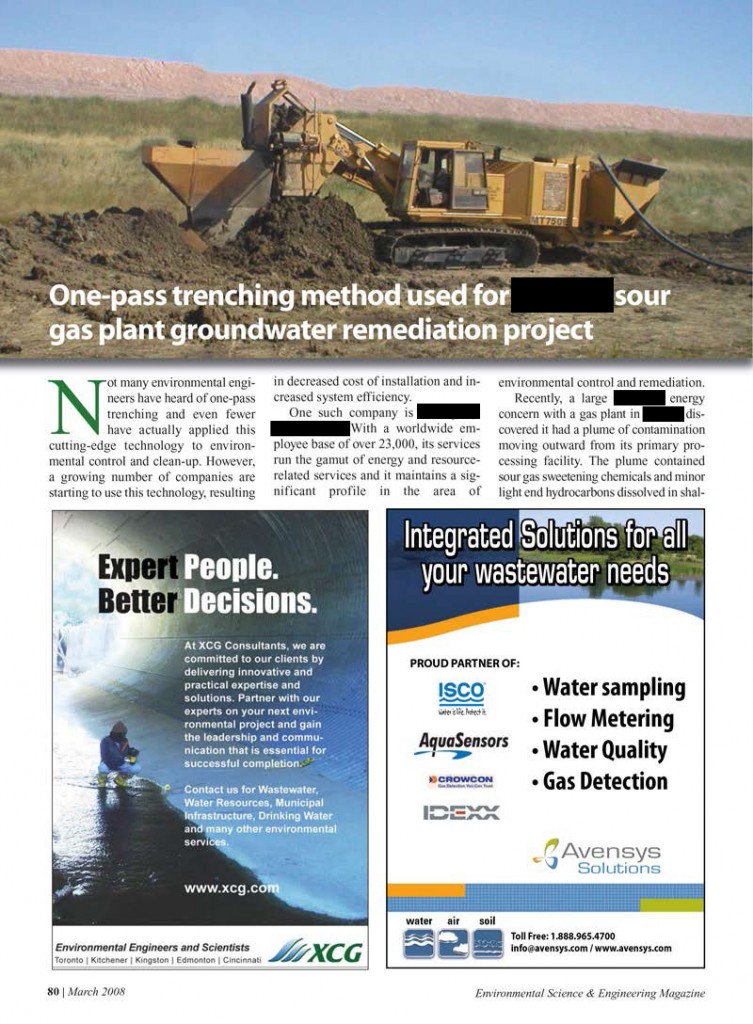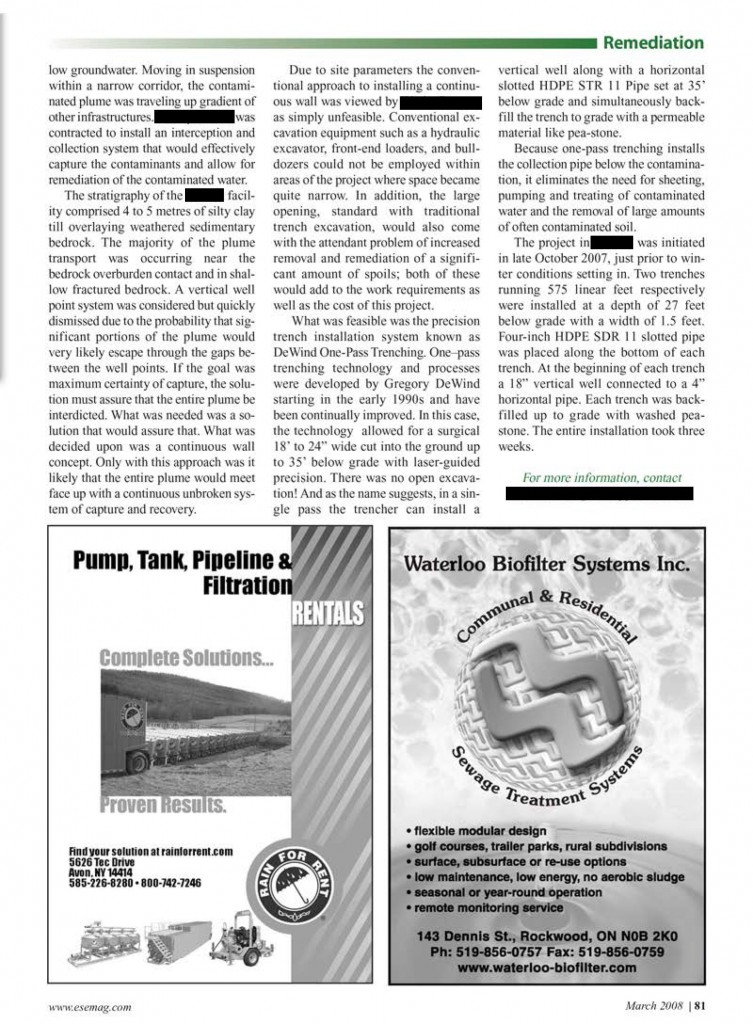One-pass trenching method used for a gas plant groundwater remediation project
Not many environmental engineers have heard of one-pass trenching and even fewer have actually applied this cutting-edge technology to environmental control and clean-up. However, a growing number of companies are starting to use this technology, resulting in decreased cost of installation and increased system efficiency. One such company is “NAME REMOVED”. With a worldwide employee base of over 23,000, its services run the gamut of energy and resource related services and it maintains a significant profile in the area of environmental control and remediation.
Recently, a large “NAME REMOVED” energy concern with a gas plant in “NAME REMOVED” discovered it had a plume of contamination moving outward from its primary processing facility. The plume contained sour gas sweetening chemicals and minor light end hydrocarbons dissolved in shallow groundwater. Moving in suspension within a narrow corridor, the contaminated plume was traveling up gradient of other infrastructures. “NAME REMOVED” was contracted to install an interception and collection system that would effectively capture the contaminants and allow for remediation of the contaminated water.
Due to site parameters the conventional approach to installing a continuous wall was viewed by “NAME REMOVED” as simply unfeasible. Conventional excavation equipment such as a hydraulic excavator, front-end loaders, and bulldozers could not be employed within areas of the project where space became quite narrow. In addition, the large opening, standard with traditional trench excavation, would also come with the attendant problem of increased removal and remediation of a significant amount of spoils; both of these would add to the work requirements as well as the cost of this project.
What was feasible was the precision trench installation system known as DeWind One-Pass Trenching. One–pass trenching technology and processes were developed by Gregory DeWind starting in the early 1990s and have been continually improved. In this case, the technology allowed for a surgical 18’ to 24” wide cut into the ground up to 35’ below grade with laser-guided precision. There was no open excavation! And as the name suggests, in a single pass the trencher can install a vertical well along with a horizontal slotted HDPE STR 11 Pipe set at 35’ below grade and simultaneously backfill the trench to grade with a permeable material like pea-stone.


|
|
© 2012 Dewind. All Rights Reserved.Designed by Planted Meida